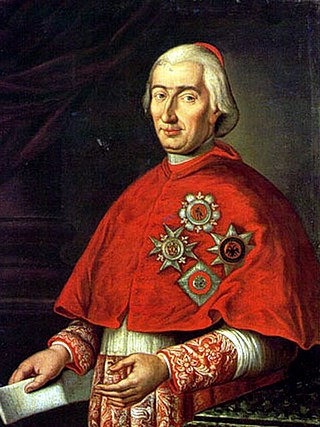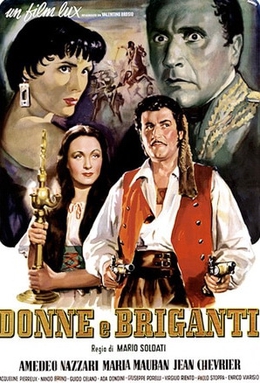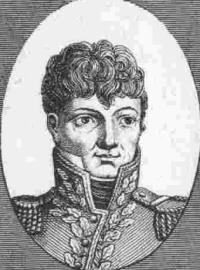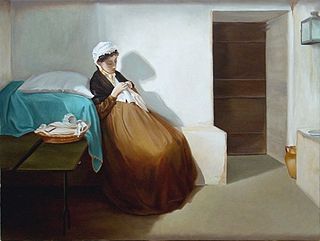Related Research Articles

The House of Orsini is an Italian noble family that was one of the most influential princely families in medieval Italy and Renaissance Rome. Members of the Orsini family include five popes: Stephen II (752–757), Paul I (757–767), Celestine III (1191–1198), Nicholas III (1277–1280), and Benedict XIII (1724–1730). The family also included 34 cardinals, numerous condottieri, and other significant political and religious figures. The Orsini are part of the Black nobility who were Roman aristocratic families who supported the Popes in the governance of the Papal States.

Ferdinand I was King of the Two Sicilies from 1816 until his death. Before that he had been, since 1759, King of Naples as Ferdinand IV and King of Sicily as Ferdinand III. He was deposed twice from the throne of Naples: once by the revolutionary Parthenopean Republic for six months in 1799, and again by a French invasion in 1806, before being restored in 1815 at the end of the Napoleonic Wars.

The Parthenopean Republic or Neapolitan Republic was a short-lived, semi-autonomous republic located within the Kingdom of Naples and supported by the French First Republic. The republic emerged during the French Revolutionary Wars after King Ferdinand IV fled before advancing French troops. The republic existed from 21 January to 13 June 1799, collapsing when Ferdinand returned to restore monarchial authority and forcibly subdued republican activities.

Fabrizio Dionigi Ruffo was an Italian cardinal and politician, who led the popular anti-Jacobin Sanfedismo movement.

Maria Carolina of Austria was Queen of Naples and Sicily as the wife of King Ferdinand IV and III, who later became King of the Two Sicilies. As de facto ruler of her husband's kingdoms, Maria Carolina oversaw the promulgation of many reforms, including the revocation of the ban on Freemasonry, the enlargement of the navy under her favorite, Sir John Acton, and the expulsion of Spanish influence. She was a proponent of enlightened absolutism until the advent of the French Revolution, when, in order to prevent its ideas gaining currency, she made Naples a police state.

Museo di Capodimonte is an art museum located in the Palace of Capodimonte, a grand Bourbon palazzo in Naples, Italy designed by Giovanni Antonio Medrano. The museum is the prime repository of Neapolitan painting and decorative art, with several important works from other Italian schools of painting, and some important ancient Roman sculptures. It is one of the largest museums in Italy. The museum was inaugurated in 1957.

Prince Francesco Caracciolo was an Italian naval officer and revolutionary.

Women and Brigands is a 1950 French-Italian historical melodrama adventure film directed by Mario Soldati and starring Amedeo Nazzari, Maria Mauban and Jean Chevrier. It is based on the story of the legendary guerilla fighter Fra Diavolo, who led a major uprising against French forces in Naples during the Napoleonic Wars. In 1953 it was released in a dubbed version in the United States under the alternative title The King's Guerrillas.

Sanfedismo was a popular anti-Jacobin movement, organized by Fabrizio Cardinal Ruffo, which mobilized peasants of the Kingdom of Naples against the pro-French Parthenopaean Republic in 1799, its aims culminating in the restoration of the Monarchy under Ferdinand I of the Two Sicilies. Its full name was the Army of Holy Faith in our Lord Jesus Christ, and its members were called Sanfedisti.

Jean-Baptiste Broussier was a French Divisional General of the French Revolutionary Wars and Napoleonic Wars.

Giuseppe Maria Capece Zurlo, Theat. was an Italian cardinal who served as Archbishop of Naples.

Emma Hamilton is a 1968 historical drama film directed by Christian-Jaque and starring Michèle Mercier, Richard Johnson and John Mills. It was partly based on the 1864 novel La Sanfelice by Alexandre Dumas and depicts the love affair between Emma Hamilton and Horatio Nelson. It was a co-production between Italy, West Germany, France and the United States.
Giustino Fortunato, also known as Giustino Fortunato senior was an Italian magistrate and politician. His nephew was the Italian historian and politician Giustino Fortunato (1848-1932).
Luisa Sanfelice is a 1942 Italian historical drama film directed by Leo Menardi and starring Laura Solari, Massimo Serato and Osvaldo Valenti. The film is an adaptation of a novel by Alexandre Dumas based on the story of Luisa Sanfelice (1764-1800) an Italian aristocrat executed in Naples by Ferdinand I for supporting a Republican attempt to overthrow him during the French Revolutionary Wars. Horatio Nelson and Lady Hamilton both feature prominently.

Luisa or Luigia Sanfelice (1764–1800) was an Italian aristocrat who was executed by Ferdinand I of the Two Sicilies because of her involvement with the French-backed Parthenopean Republic during the French Revolutionary Wars, although Sanfelice was largely apolitical. As she was generally regarded as the innocent victim of circumstances, she became a legendary figure who was widely portrayed in popular culture. During the nineteenth century she was often depicted as a gentle and naïve beauty whose story closely resembled that of the fictional Fioria Tosca,the heroine of the Puccini opera Tosca.
La Sanfelice is an 1864 novel by the French writer Alexandre Dumas. It depicts the arrest and execution in Naples of Luisa Sanfelice, who was accused of conspiring with the French and their supporters against Ferdinand I of the Two Sicilies during the French Revolutionary War. Lord Nelson and Lady Hamilton, who were in Naples at the time, also feature as characters.

Ettore Carafa d'Andria, the Count of Ruvo was an Italian soldier and republican patriot, executed after the fall of the Parthenopean Republic. His courage, idealism, and resolute optimism created in Ettore an image of the Italian martyr for following generations involved in the struggle for more democratic structures and an Italian nation.
Gennaro Serra, Prince of Cassano was an Italian revolutionary and soldier, who fought for the brief Parthenopean Republic in Naples.
This is a list of Italian television related events from 2004.

Gioacchino de Gemmis was a Catholic bishop, archpriest, prelate and rector of the University of Altamura. He's best known for his role in the so-called Altamuran Revolution (1799), advocating peace and helping the refugees, who had fled Altamura after the battle with the Sanfedisti, to be allowed in Terlizzi.
References
- ↑ "Luisa Sanfelice - 2004 - films released 2000 - 2022 - films & docu". Filmitalia. Retrieved January 29, 2023.
- ↑ Marrone, Gaetana; Puppa, Paolo (December 26, 2006). Encyclopedia of Italian Literary Studies. Routledge. p. 1847. ISBN 978-1-135-45529-3.